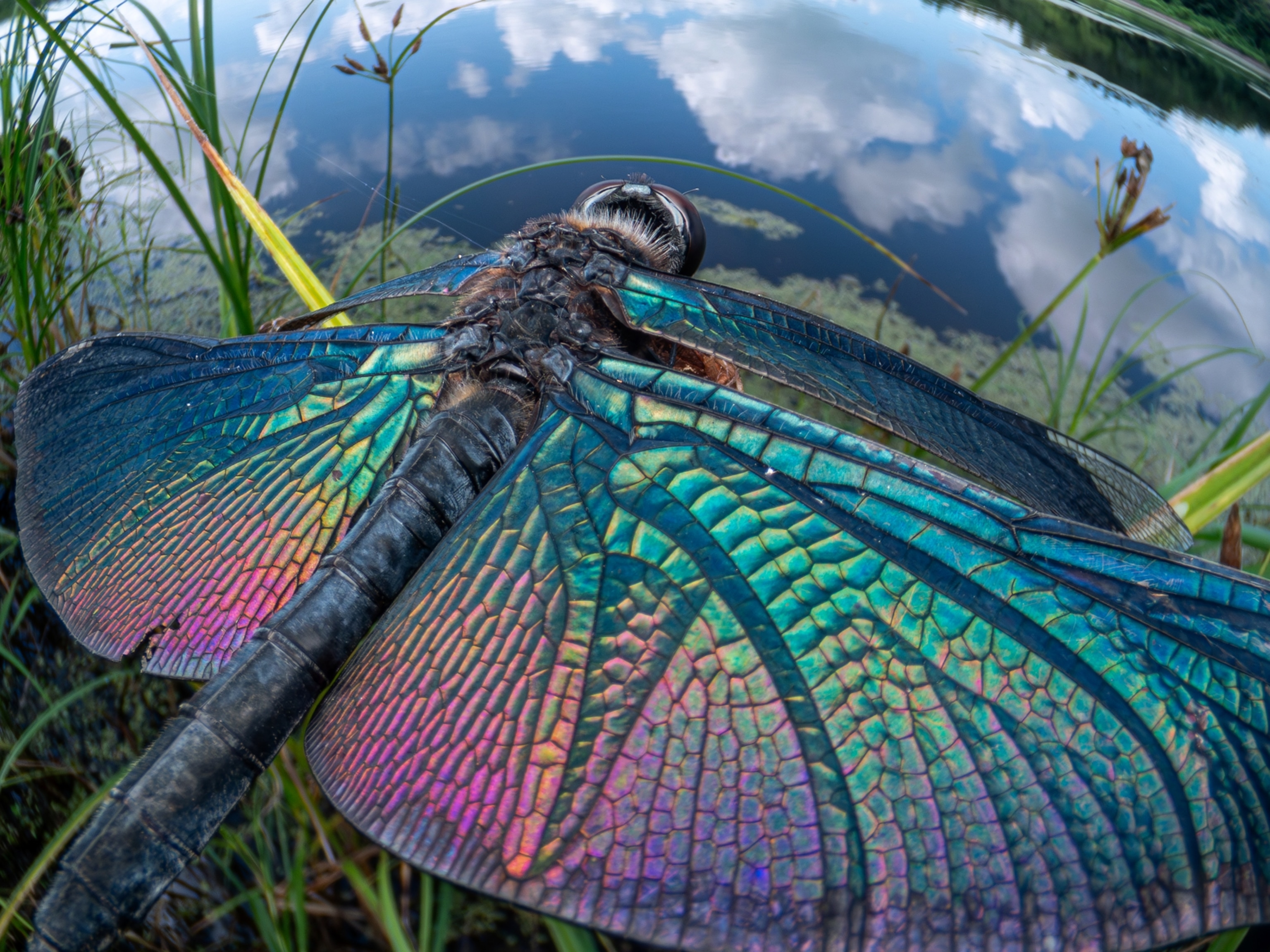
Praying Mantis Looks Like a Flower—And Now We Know Why
The mantis orchid of Southeast Asia evolved in a way that's completely unique to insects.
When is an orchid not an orchid? When it's a female orchid praying mantis, a Southeast Asian insect that masquerades as a flower to attract prey.
With petal-like legs and a yellow or whitish pink color, females share little resemblance to males, which are about half the size and sport a dull, greenish brown color.
Now, new research shows that male and female orchid mantises don't just look different—they evolved in a way never before seen in arthropods, the group that includes spiders and insects. (See pictures of amazing insect camouflage.)
The research suggests that the females' strategy of hunting pollinating insects shaped the two known species' evolution, leading to big females that resemble orchids and small males adept at hiding.
Making of a Huntress
To learn more about how female and males evolved, Gavin Svenson of the Cleveland Museum of Natural History and colleagues measured the body sizes of over a hundred orchid mantises with a stereomicroscope in the lab. They also modeled how some of their evolutionary traits, such as color, developed over time.
(The rebellion of the ant slaves)
Lastly, the researchers studied the evolutionary relationships of orchid mantises and their distant relatives, allowing the team to reconstruct the shifts that led to the orchid mantises' unusual appearance. (See beautiful pictures of orchids from around the world.)
The results suggest that the orchid mantises’ ancestors began hanging around flowers at some point, providing them with access to more food options in the form of pollinators.

“Then, a small group within this lineage started evolving larger females to take advantage of all the pollinating insects that visit flowers,” says Svenson, whose study appeared recently in the journal Scientific Reports. The bigger the female, the more variety of prey she can take down—both large and small.
“The first lineage that branched off exhibited the same color patterns as most other mantis [species], which is a green-black pattern that breaks up the outline of the body and makes it harder for predators to spot them,” says Svenson.
The next evolutionary change took place when females of the two orchid mantis species developed their conspicuous yellow, white, and pink colors.
This meant the big, colorful female orchid mantises could attract insect prey by mimicking flowers. Male orchid mantises, however, remained small and camouflaged, allowing them to avoid predators, seek out mates, and ambush prey. (Also see "A Plant That Looks Like Poop and Other Sneaky Disguises.")
“We think the males remain small because they need to move around the environment to find females and mate,” says Svenson. “If you look like a giant conspicuous flower and you’re actively moving around, you give yourself away.”

Bigger and Brighter
That difference in hunting strategy—previously unknown among arthropods—also likely drove the evolution of bigger and more brightly colored females, he adds.
Although larger females are common in many arthropods—think black widow spiders—it's usually because bigger females produce more eggs and smaller males are more agile at courting them, notes Hojun Song, an entomologist at Texas A&M University who was not involved in this research.
But in this case, larger females evolved from their predatory success—an "entirely novel" discovery, Song says.

"People ask why studying evolutionary relationships or getting accurate species classifications is valuable, and this experiment is an example of a good answer," notes Svenson.
"Once you know the true lineages, you can do interesting research that gives you unique perspective into how evolution works and how things change."





